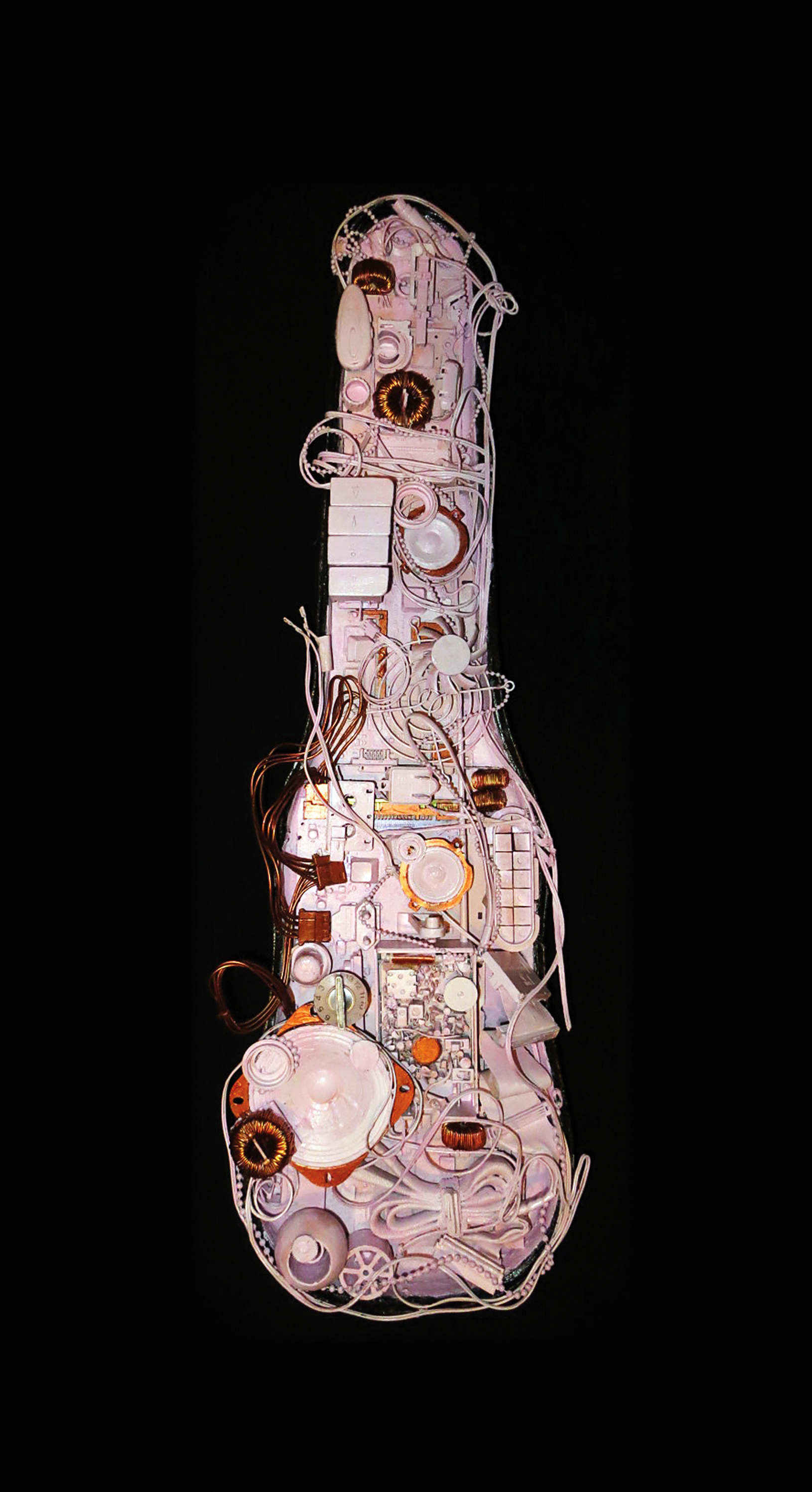Thomas Kristiansson has been producing audio gear in Sweden for the past 20 years under the Vintagedesign and TK Audio brands. In recent years, the TK Audio line has defined itself with builds that offer up some unique features in otherwise familiar-feeling interfaces. The T-Komp is available as a 19-inch dual mono single-space rack unit (the model reviewed here), or in single channel 500 Series format. The rack unit adds a high-pass detector on the compression circuit, as well as the option to link channels, and a mode switch toggling between feed-forward and feed-back compression.
At first glance, the T-Komp suggests a classic VCA compressor – the faceplate would blend in among the various SSL-inspired designs, and the feed-back mode switch (FB) immediately evoked an API 2500 [Tape Op #52] vibe for me. While I had success with the T-Komp in many of the settings I’d typically rely on those units for, this compressor works very much in its own way. There isn’t a traditional ratio control – just a button marked 2:1. T-Komp’s ratio varies based upon incoming signal, similar to tube variable-mu designs. By default, that ratio may land anywhere between 1:1 and 20:1, with the 2:1 switch restricting operation from 1:1 to 2:1. Next up are envelope controls: A single five-position Timing rotary control moves you through four fixed attack and release presets plus a program-dependent adaptive auto mode (A). You also get Blend, Threshold, and Make-up gain on 41-position stepped controls – a nice touch, as are the illuminated gain reduction meters. If I’ve got one gripe with the interface, it’s that the buttons for the high-pass filter, ratio range, and compression mode have no illumination cue. Because the difference between in and out positions on the buttons are barely a sixteenth of an inch, there’s not much to go on visually (or even by feel) as to which position they are in. With the inclusion of stepped controls to make recalls easy, it seems slightly out of character, but it’s certainly not a big deal.
In use, I’m absolutely impressed. I tend to treat compressors somewhat as specialists, and typically have little pockets of preferred uses for each model. T-Komp performed admirably just about everywhere I tried it, and never sounded bad. To get to know T-Komp, I first pulled up a session that had been interrupted by the pandemic, offering unprocessed drums, bass, acoustic guitar, and a few pads. I put T-Komp across the drum group and started flipping through time constants. Right away I gravitated towards positions 2 and 3 (roughly 5 ms/200 ms and 10 ms/400 ms). Running around 4 to 6 dB reduction on the meter in time constant position 2, then pulling the Dry/Wet blend back a bit brought out body and resonance in the drums (recorded in a small room) without any pumping or harshness. In time constant position 3 (and fully Wet), toggling between feed-back and feed-forward compression modes felt like it changed the envelope emphasis slightly on the snare drum from the attack to the decay and snare wires. It was easy to make the kit feel fuller and livelier without ever sounding unnatural. When moving T-Komp over to the stereo mix bus at the 2:1 range, I had similar success. Everything gelled together, and all the right subtle movement was enhanced without feeling I was hearing the compressor work – it was only when I bypassed the T-Komp that everything it was bringing to the mix could be clearly heard (and missed!). Over another mix with a much denser, heavier arrangement, I had less success with T-Komp – its smoothness didn’t let me get the motion I was looking for without feeling I’d squashed everything too far. Using the Dry/Wet blend helped, but ultimately I was just as happy with no compression in that case.
If giving up boundless control over your compression envelope for only a handful of time presets gives you pause – and I’ll admit, initially it did for me – I can happily say that with the way T-Komp goes about its job I missed that control far less than anticipated. I usually gravitate towards faster release times than T-Komp offers, but the variable ratio is so smooth that in all but the most extreme cases it feels like the sweet spot for release times is much wider (T-Komp working as inconspicuously as it does certainly helps, too). Except for a few times across the main bus, I could always get something I was ready to commit to from T-Komp. Time constant positions 2 and 3 have been my go-to for most tracking and mixing, bringing out tone and giving solidity to acoustic guitars that had felt listless after some needed subtractive EQ, and adding a nice squish to the rather pointy front end of my 12-string guitar. On lead vocals it holds dynamics in check beautifully and cleanly ?– it’s like mic technique in a box! I’m a big fan of parallel compression on vocals, and the Dry/Wet blend knob makes it simple. My favorite use for T-Komp has been across a vocal bus, bringing multiple equal parts together, typically in time constant positions 3 or 5. The way it pulls grouped vocal tracks together is slightly magic; super smooth, coherent, consistent, and never distracting. Instant “YES!” moment for me – I’ve been collecting audio gear for more than 20 years, and I don’t get too many of those anymore!
T-Komp would make an excellent first compressor or a excellent 19th compressor. It makes everything sound better far more often than not, brings some unique characteristics with it, and is priced fairly. T-Komp’s ability to emphasize what’s exciting in a sound without imposing itself on the character of it is just flat out useful from the second you first put up the mics, to the moment the meters reset back to zero and you know your mix is done.




_disp_horizontal_bw.jpg)